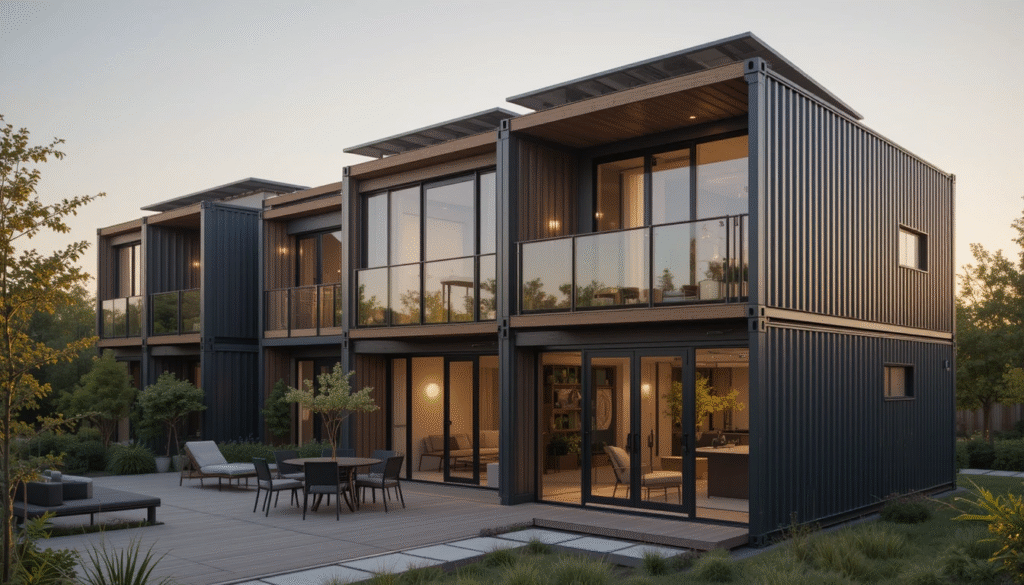Phone:
(701)814-6992
Physical address:
6296 Donnelly Plaza
Ratkeville, Bahamas.

If you’re looking for an affordable, eco-friendly, and flexible way to build a home or workspace in the U.S., there’s a term you should get familiar with: Intermodal Steel Building Units, or ISBUs.
While it might sound technical-and it is-that’s just the formal name for something that’s changing the way Americans think about construction: repurposed shipping containers.
You’ve probably seen container homes trending across Instagram, Pinterest, or YouTube. But when these containers are used in construction, especially in a residential or commercial setting, they’re referred to by their industry term-ISBUs.
Let’s dive into what they are, why they’re so powerful, and how they could be the solution to your next home, studio, office, or rental unit.
🍓 Click Here to Buy Tiny homes 🥃✨
🛒🍓 Grab Your Tiny homes Now! 🥂💎
🍹🍓 Enjoy the Sweetness – Buy Tiny homes Today! 🛍🔥
ISBUs stand for Intermodal Steel Building Units, and they’re essentially the same shipping containers used to transport goods worldwide-but repurposed for construction. These steel boxes are manufactured to exacting international standards, making them:
These traits make ISBUs incredibly appealing for everything from tiny homes and cabins to schools, clinics, retail shops, and full-scale residences.
An ISBU-based structure can be as simple as a single 20-foot unit or as complex as a multi-story home made from multiple interconnected containers.
Americans are rethinking traditional housing and embracing affordable, flexible, and sustainable alternatives. ISBUs are at the forefront of this shift. Here’s why:
ISBUs are made from Corten steel-a weathering steel designed to endure long ocean voyages. They’re engineered to carry tens of thousands of pounds, be stacked multiple stories high, and withstand brutal conditions. This makes them ideal for building in hurricane-prone, fire-prone, or earthquake-sensitive regions.
Because the base structure is already built, ISBU homes require fewer materials and less labor than traditional homes. A basic ISBU structure can be purchased for as little as $2,000–$6,000, and a fully built-out home might cost $40,000–$100,000 depending on design and size-still well below average U.S. home prices.
By repurposing used shipping containers, you’re recycling thousands of pounds of steel and avoiding the carbon emissions tied to new construction. Many ISBU-based homes go even further by incorporating solar panels, reclaimed materials, water-efficient systems, and green roofs.
With much of the structural work already done, ISBU homes can be built in weeks instead of months. Modular ISBU builds can even be constructed off-site and delivered, minimizing disruption and streamlining the process.
Despite their industrial roots, ISBUs are highly customizable. You can cut, weld, and stack them into virtually any configuration-lofts, open floor plans, decks, even rooftop gardens. Interior finishes can be anything from rustic cabin style to sleek, modern luxury.
Most people casually refer to these homes as “container homes,” but builders and architects in the U.S. prefer the term ISBU-especially in legal documents, contracts, and permit applications.
The distinction matters because “ISBU” implies a container used in structural construction, not just storage or transportation. It also:
So, if you’re serious about building with containers, it helps to speak the language-and ISBU is the term the professionals use.
The good news: ISBU homes and structures are being approved all over the U.S.-from California and Texas to Oregon, Colorado, and Florida. But regulations vary city by city and county by county.
Some areas embrace ISBU homes as an affordable housing solution, especially for Accessory Dwelling Units (ADUs) or vacation rentals. Others may have restrictions based on appearance, materials, or square footage.
Their versatility, durability, and mobility make ISBUs a smart investment for entrepreneurs, families, and DIY builders alike.

Here’s a rough idea of what goes into building an ISBU home in the U.S.:
| Component | Estimated Cost |
|---|---|
| Used 40ft ISBU Container | $3,000–$6,000 |
| Cutting & Reinforcements | $2,000–$7,000 |
| Interior Framing & Finishes | $15,000–$30,000 |
| Insulation & Climate Control | $5,000–$10,000 |
| Plumbing & Electrical | $7,000–$15,000 |
| Site Prep & Foundation | $3,000–$10,000 |
| Permits & Professional Fees | $2,000–$5,000 |
| Total Build Estimate | $40,000–$100,000+ |
Technically, they’re the same steel box. But once a shipping container is repurposed for structural construction, it’s called an ISBU. The term is used in architecture, engineering, and permitting to distinguish it from containers used for shipping or storage.
Yes-but it depends on your location. Zoning laws, building codes, and HOA rules vary. Many rural and urban areas are increasingly open to ISBU construction, especially for ADUs, cabins, or sustainable builds. Always check with your local planning department.
With proper care, ISBU homes can last 40–60 years or longer. Regular maintenance (like rust prevention, insulation checks, and structural integrity monitoring) will extend the lifespan. These steel structures are designed to endure.
Absolutely-many DIYers have done it. However, you’ll need some knowledge of welding, insulation, electrical, and plumbing. For best results (and code compliance), it’s smart to work with contractors who specialize in ISBU-based construction.
ISBUs offer a bold, practical answer to America’s rising housing costs and sustainability concerns. Whether you’re dreaming of a weekend cabin in the mountains or a full-time residence that doesn’t break the bank, these rugged steel modules give you a blank canvas to build your future.
They’re strong, affordable, and surprisingly stylish. And most importantly-they’re ready to reshape how we think about home.